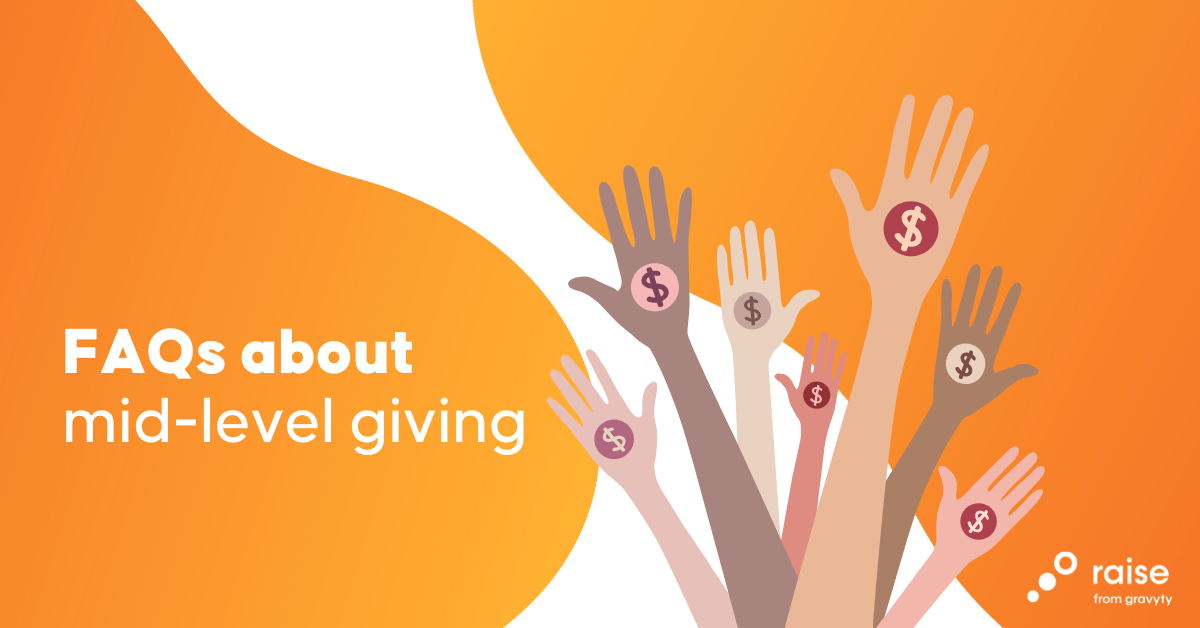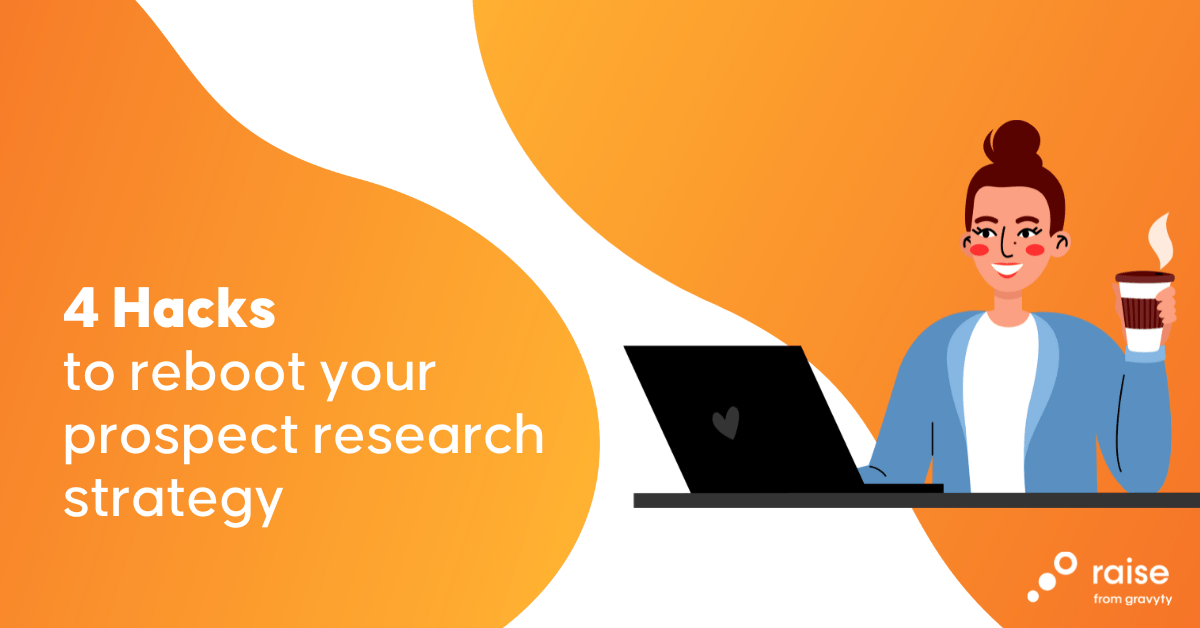Frequently asked questions about mid-level giving

More and more organizations are putting resources behind cultivating and stewarding their mid-level donors. This donor segment is critical because inside are your future major gift and planned giving donors. However, these donors typically fall between the cracks of annual and major giving—plenty of promise and potential capacity to give, but not assigned to a fundraiser.
Organizations are identifying these donors as a way to increase revenue in the short term. But improved giving revenue isn’t the only benefit of engaging further with your mid-level donors. In many cases, your next major donors likely give below their rated ability and fall into that mid-level purview.
So how do fundraisers build their mid-level donor strategy? Here are some of the frequently asked questions around engaging your mid-level supporters:
Do mid-level donors have capacity?
Although some mid-level donors are giving below their rated capacity, this is not the case for all of them. Some donors may give as much as possible but fall below the threshold for major giving. That could be the case now, but as circumstances change, they progress in their careers, and family situations change, so can their capacity.
Some younger donors may have a strong affinity for your cause before they reach their full earning potential. Some lifetime Annual Fund donors that have flown below the radar could leave entire estates to organizations. Mid-level donors with consecutive years of giving are loyal and can have hidden capacity.
How can I prioritize mid-level donors?
There is evidence that your mid-level donors are philanthropic and have an affinity for your organization. But perhaps your organization is among the 10+ they support. So before thinking about your priorities, consider for a second the priorities of the donor.
Turning your attention directly to these individuals can elevate your organization to the first or second priority in who they choose to give to. In addition, giving a personalized experience to your mid-level donors may give you a competitive advantage in an economy that sees fewer individual donors year-over-year.
What’s the best mid-level donor strategy?
The purpose of engaging with your mid-level donors is to get to know them better. By personalizing outreach to them, they feel that their gifts are valued and needed.
As you reach out, ask questions to get to know them beyond the dollar amount they provide:
- What are their philanthropic priorities?
- What are their interests?
- What milestones are they celebrating and when?
Suddenly, you’re building personal relationships that can support your needs as an organization today and potentially fill the major gifts pipeline tomorrow.
How can I scale personalized mid-level donor outreach?
Tapping into the mid-level giving pool can be a daunting task for many organizations already at capacity managing existing portfolios.
Take the time to develop your donor journey
As you focus your attention on your mid-level donors, take the time to map out the donor journey to ensure you are maintaining high-quality touch points and creating stewardship at every stage.
Here are six questions that will build the foundation of your donor journey:
- What motivates this particular donor to give?
- Why does your organization receive their support?
- What are their interests?
- How often am I communicating with this donor?
- What have I told or shown them about the impact of their gift?
- What have I done to encourage this donor to give again at a higher level?
Scale your donor stewardship
To maintain high levels of giving, personalized engagement needs to be a focal point of your fundraising strategy. It’s one thing when it comes to your major donors, but how do you successfully accomplish this en masse with your mid-level donors as well?
It’s a challenge the majority of organizations continue to struggle with as 74% are still working on—or don’t have—strategies that use personal outreach to reach donors deeper in the pyramid. While some may have the luxury of constructing mid-level giving teams, other organizations will look toward improving workforce efficiencies in order to scale their efforts. Technology in particular can play a vital role in this. As fundraisers grapple with heightened demands to saturate their portfolios, they will require new tools and strategies to help them expand their reach and improve the quality of the one-to-one engagement simultaneously.
Tools for building pipeline
Artificial Intelligence (AI) is a tool with the power to create unprecedented pathways to expand the culture of philanthropy across organizations, connect donor journeys to major giving, scale infrastructure for industry-leading implementation times, and more.
Advancement leaders recognize its influence too, as 82% of them believe that AI can effectively prioritize and reach more prospects.
AI empowers fundraisers to operate more efficiently, which in turn, allows organizations to realize new and increased giving from their fundraising teams. When it comes to your mid-level donors, AI can be particularly impactful as you seek to continuously engage this larger population. When fundraising teams use assistive AI to empower fundraisers, they’re able to execute on the following so their strategy yields predictable success on a whole new level.
Stewarding your mid-level donors is critical to a healthy pipeline, but your time is limited. Learn how Raise from Gravyty can transform your fundraising by expanding your workforce and building your mid-level gift pipeline. Book your free consultation.



